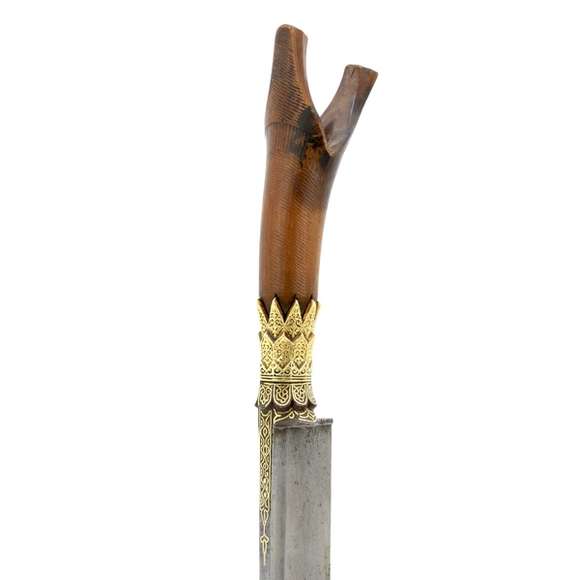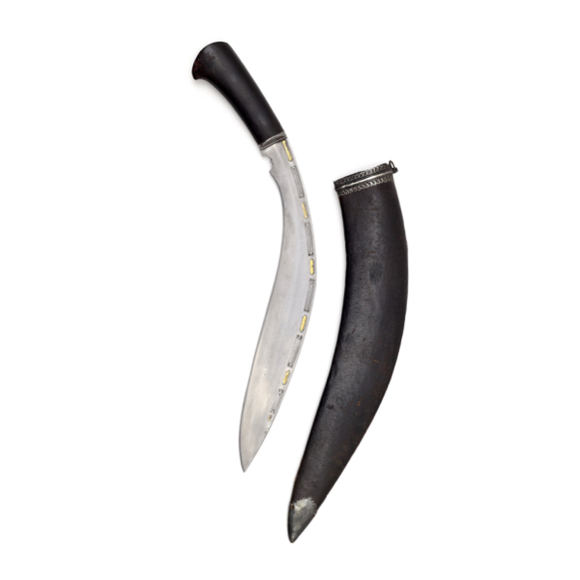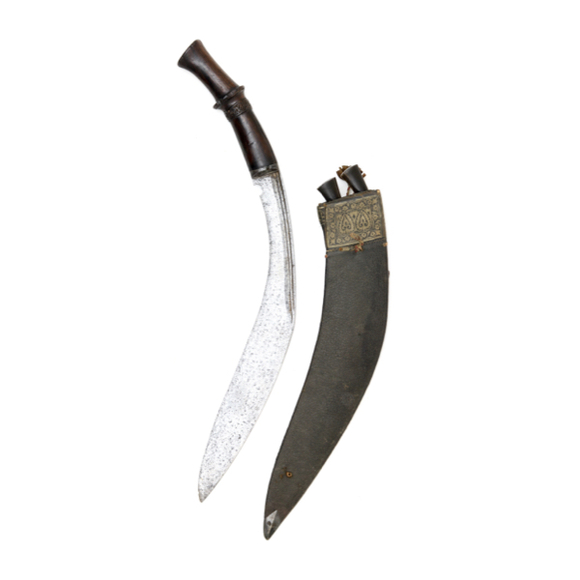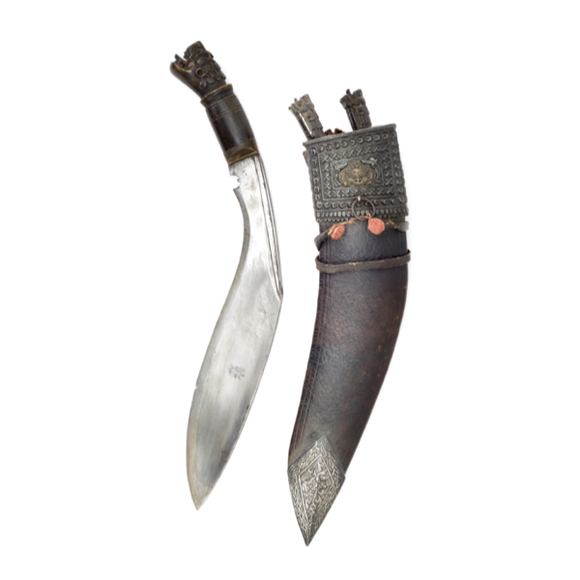Its blade with very fine and complex pamor, brought out by a polish.

93 cm / 36.6 inch
79 cm / 31.1 inch
forte 6 mm
middle 3 mm
forte 34 mm
middle 31 mm
875 grams
A Sumatran saber from the Aceh region, described locally as peudeueng peusangan with a "hulu meu apet" or Indian styled basket hilt. These hilts are a remnant of strong Indian influence on the island of Sumatra, from before they largely converted to Islam. In the 19th century such sabers were still worn by Acenese noblemen as a symbol of high status.
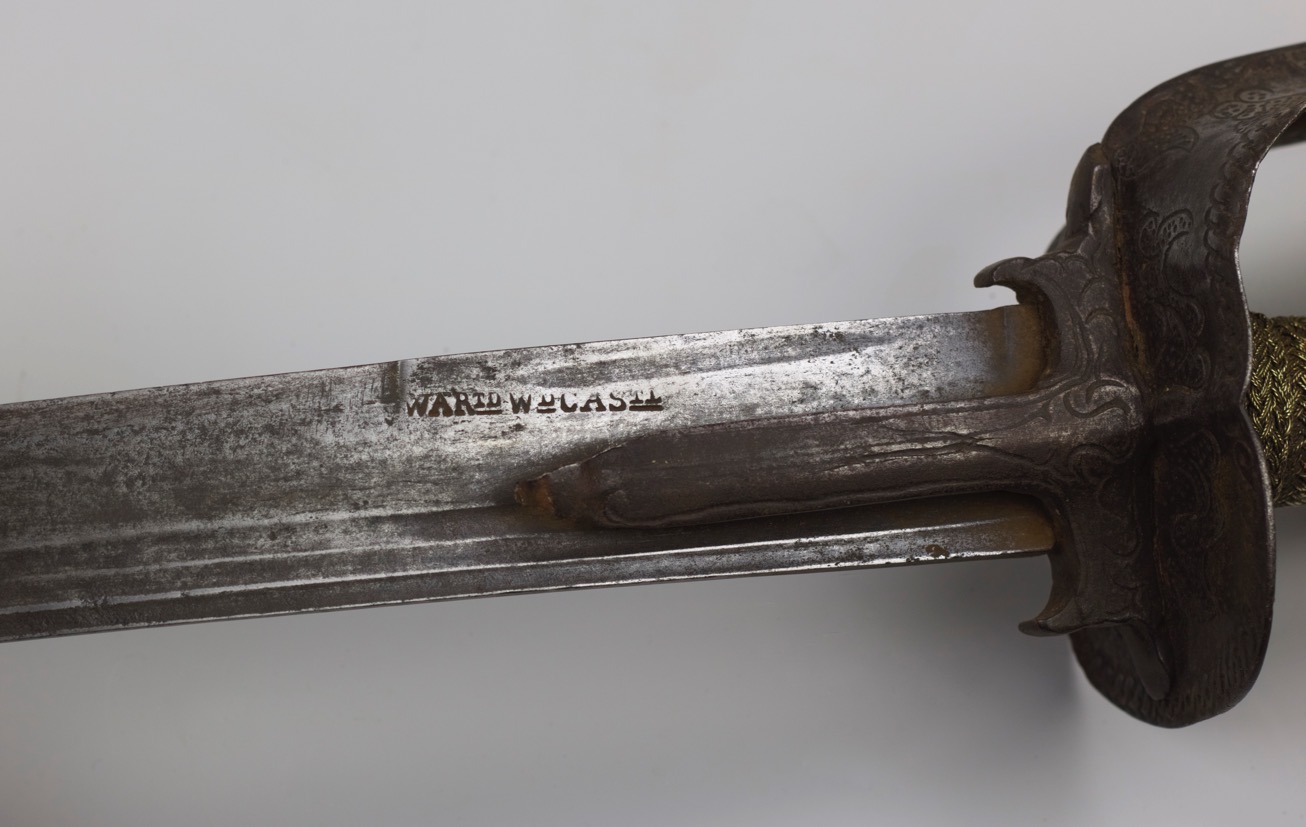
The grip is covered with an intricate basket pattern in very fine gold-silver alloy wire. (Called asam or "electrum".) The iron basket with engraved decor, including some abstract vegetive motifs. The use of asam indicates a high rank.
The long, springy blade has three fullers and a false backedge. It has two auxiliary fullers at either side of the base of the blade. At the base of the blade is stamped:
WARTDCASTTL
This is indicative of a Western import, probably "Warranted cast steel" from Sheffield, England. Some other swords with this marking have turned up in museum and private collections over the years, including two peudeueng peusangan, a saber from Borneo, and a British M1796 pattern light cavalry saber. It is probably a remnant of British presence on Sumatra in the early 19th century.
A nice example of a rare Sumatran saber type, with intricate gold/silver alloy hilt wrap.
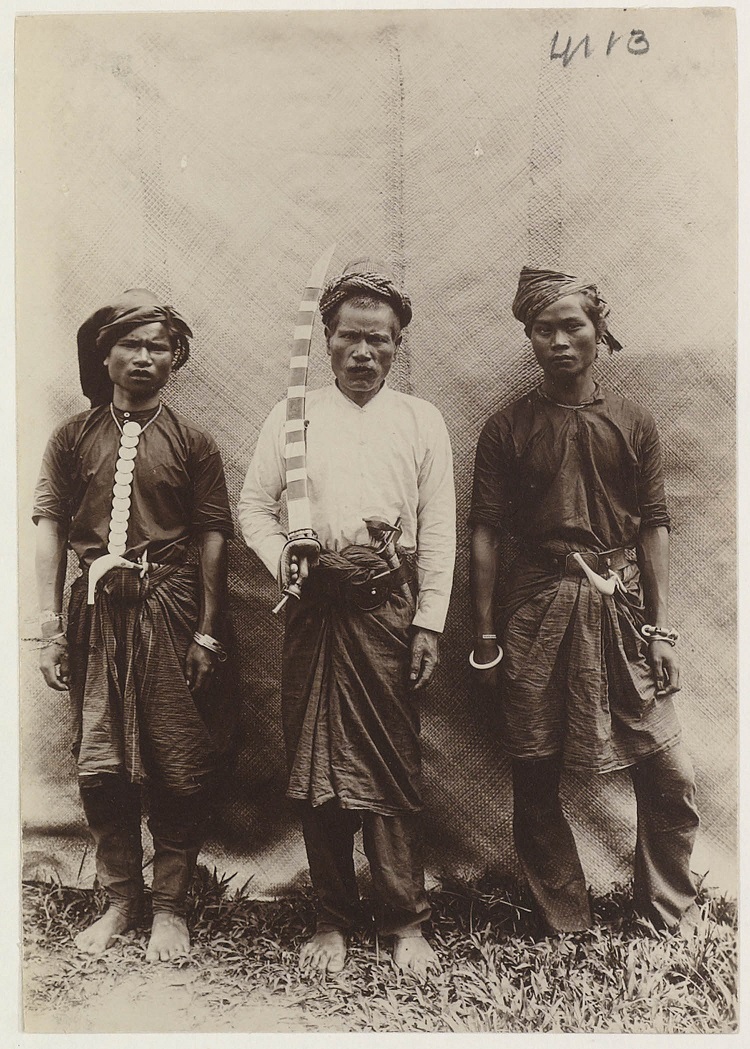
An Acenese gentleman and his peudeueng peusangan.
Photo by Henricus Marinus Neeb, around 1900.
From Photography Indonesia blog

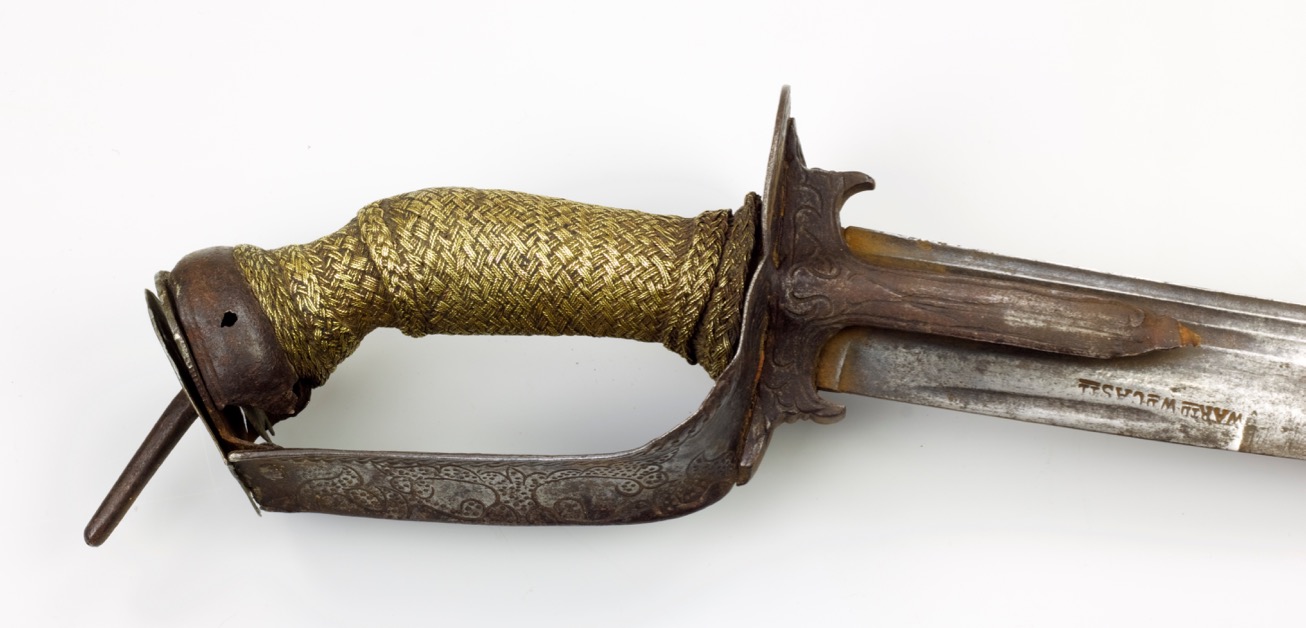
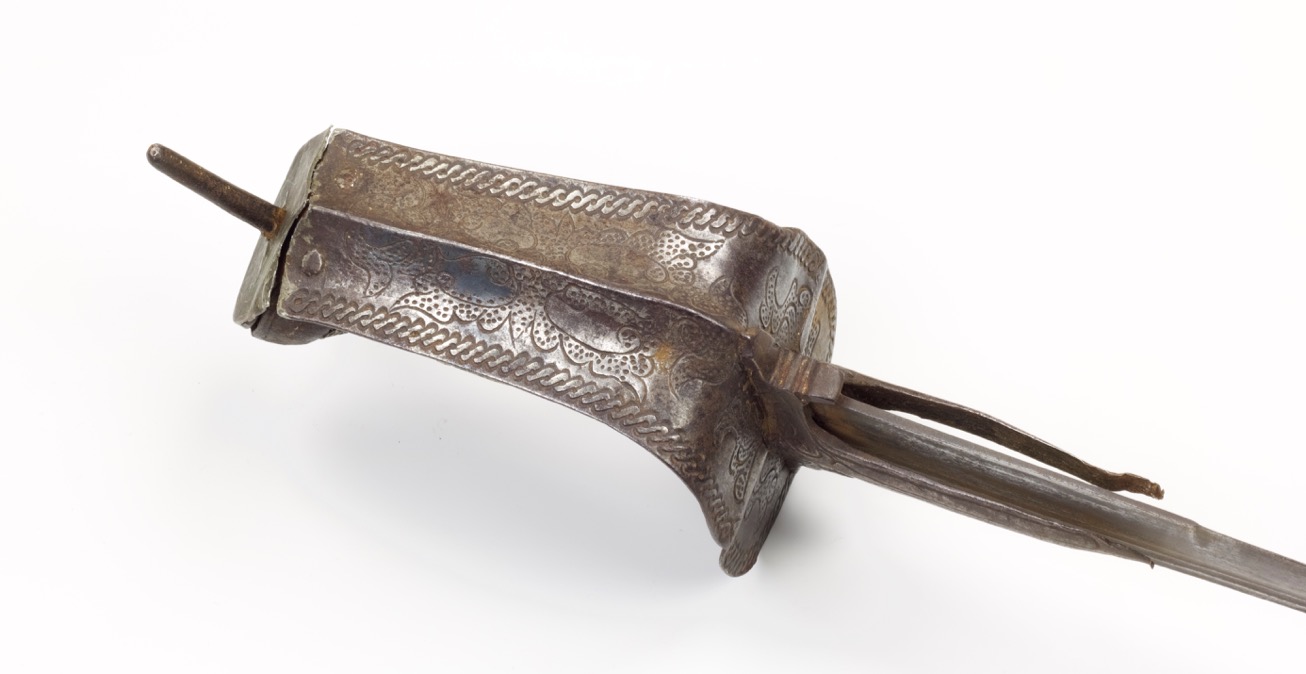
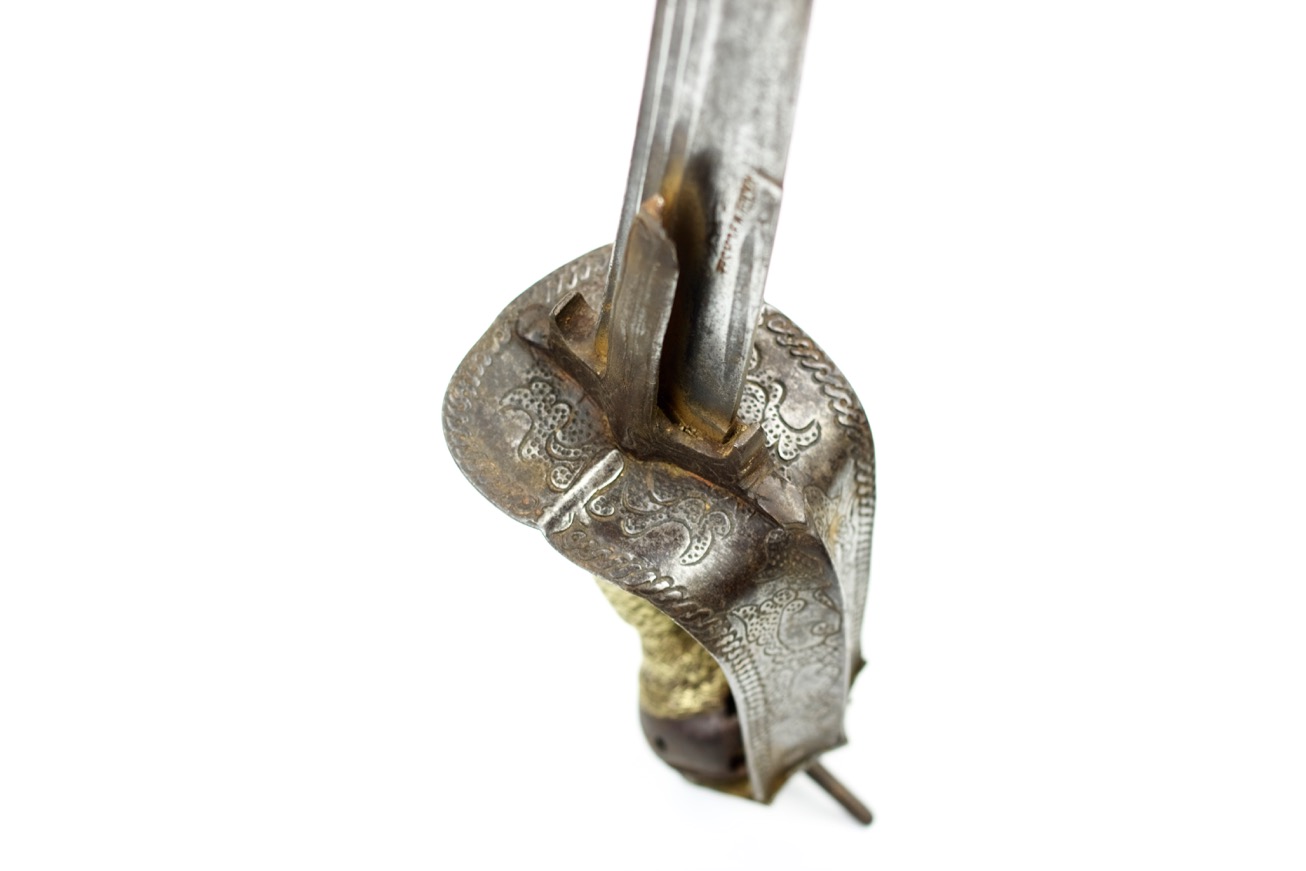
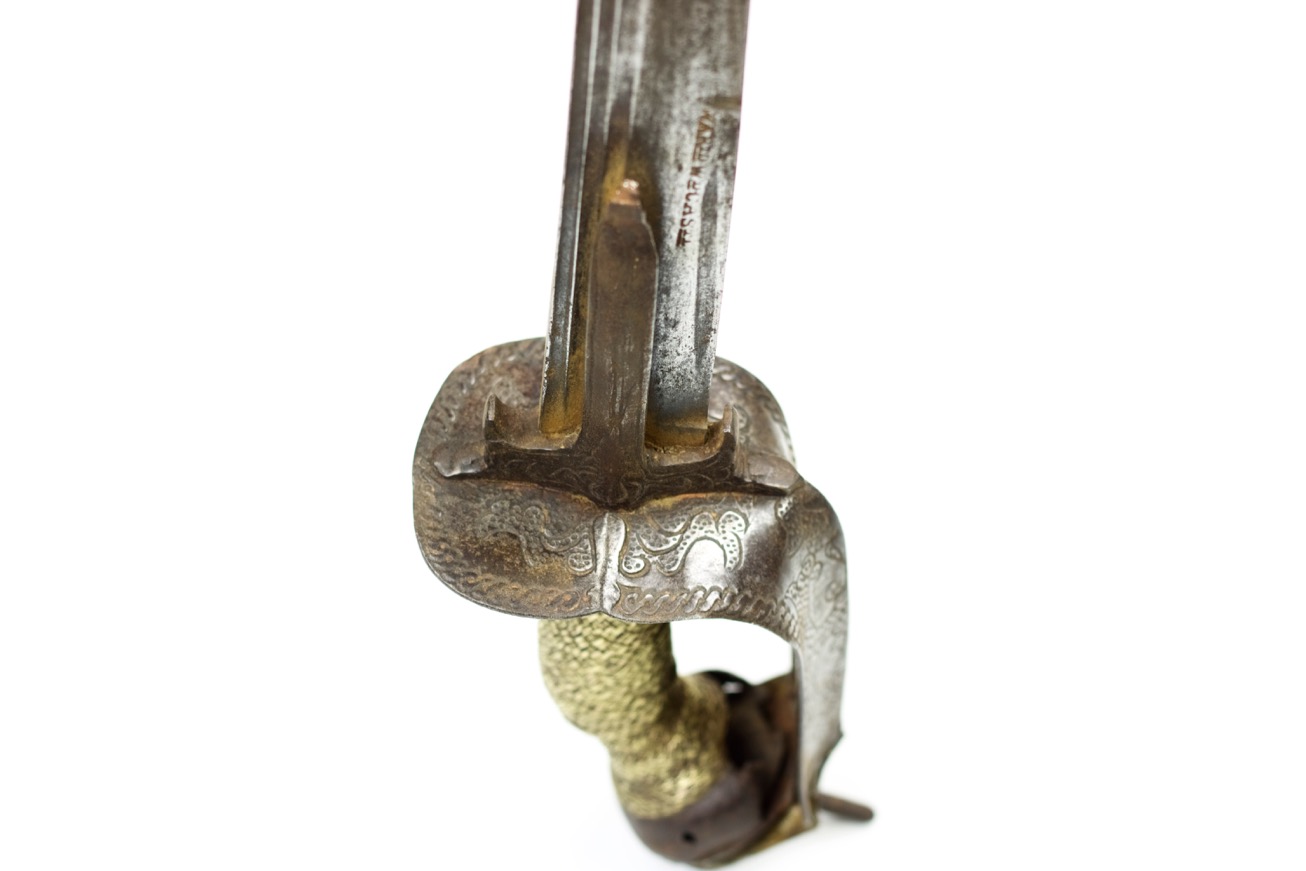
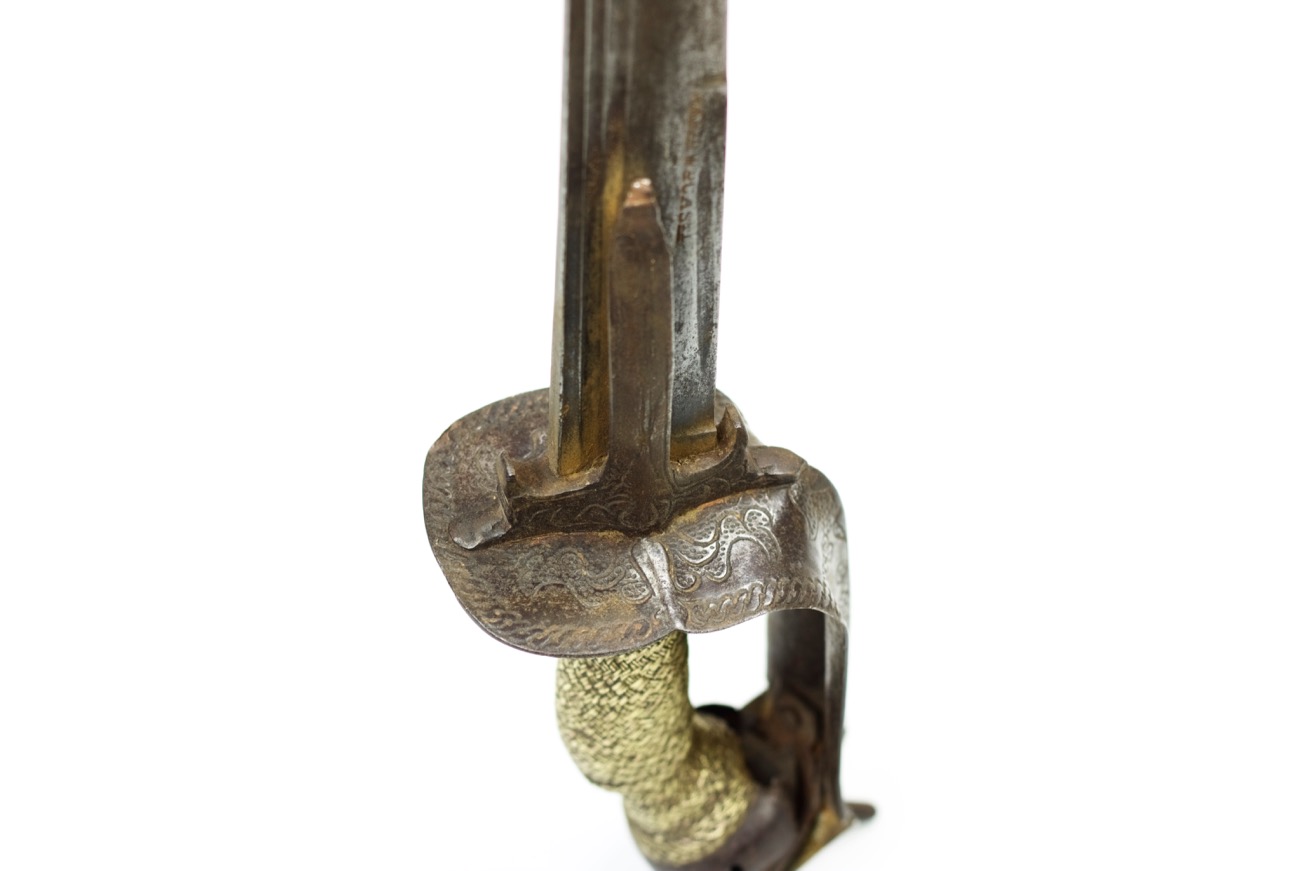
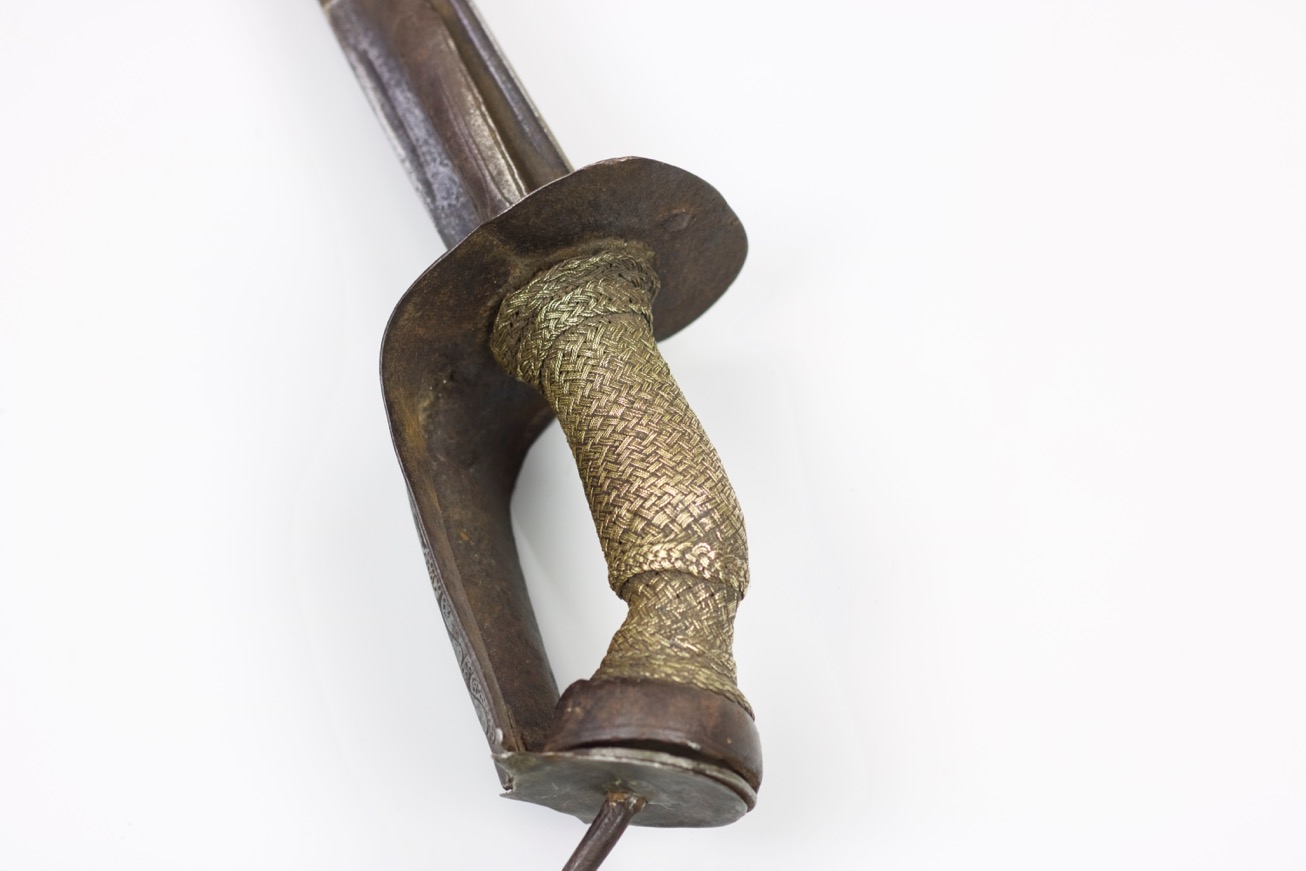
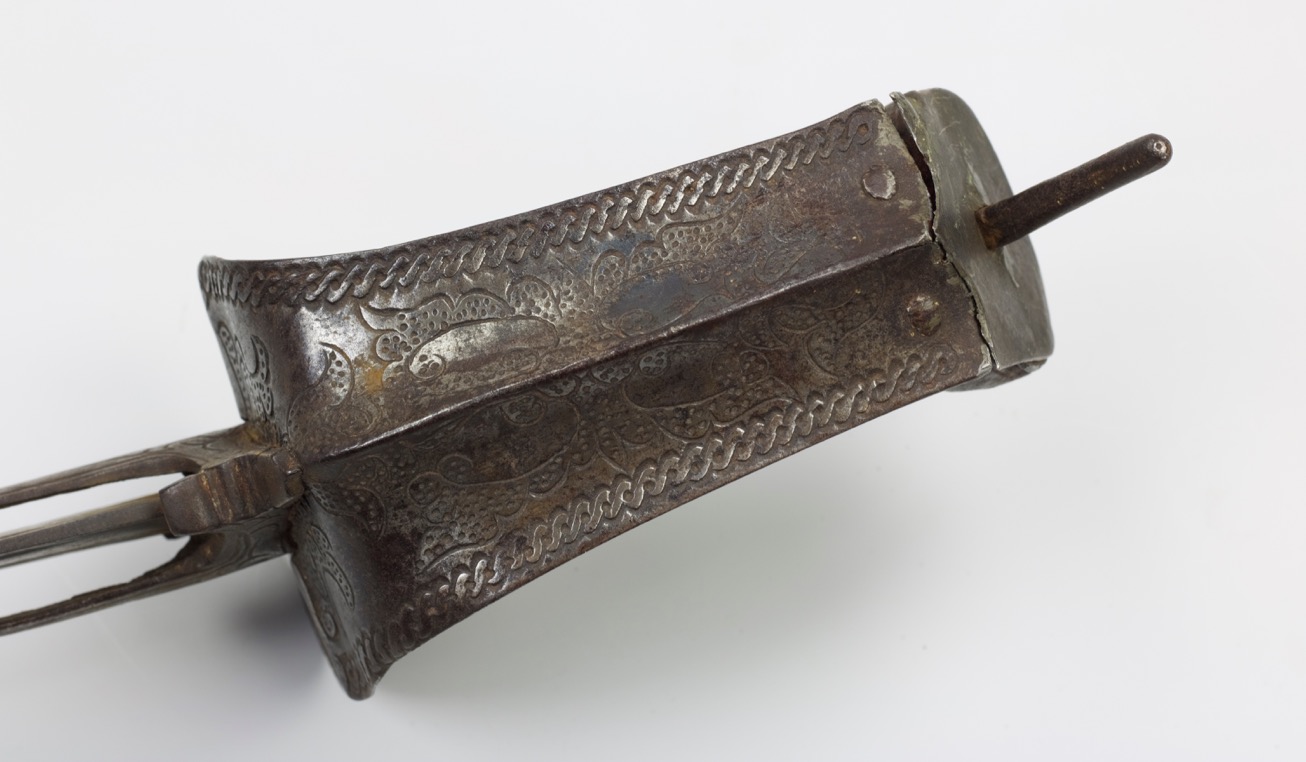
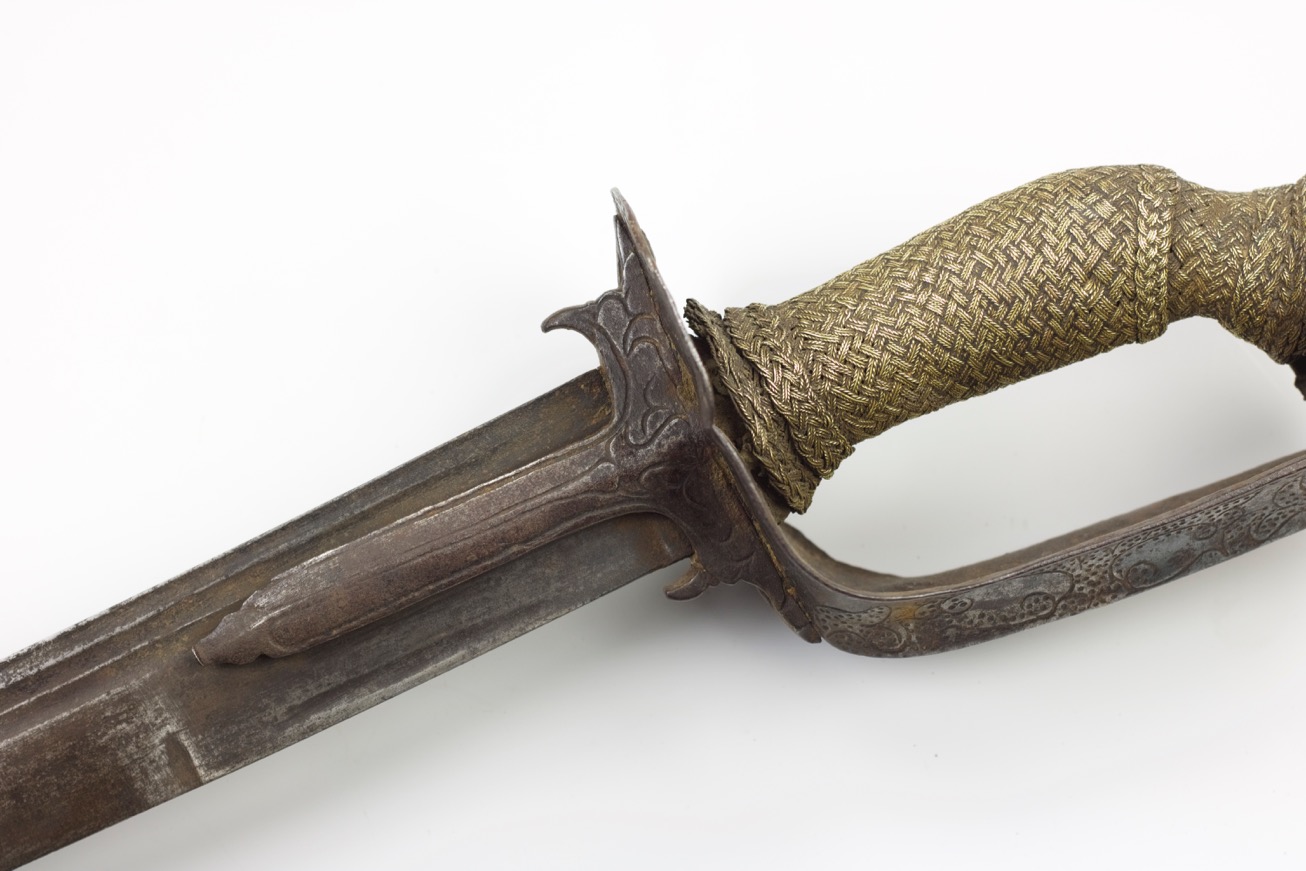
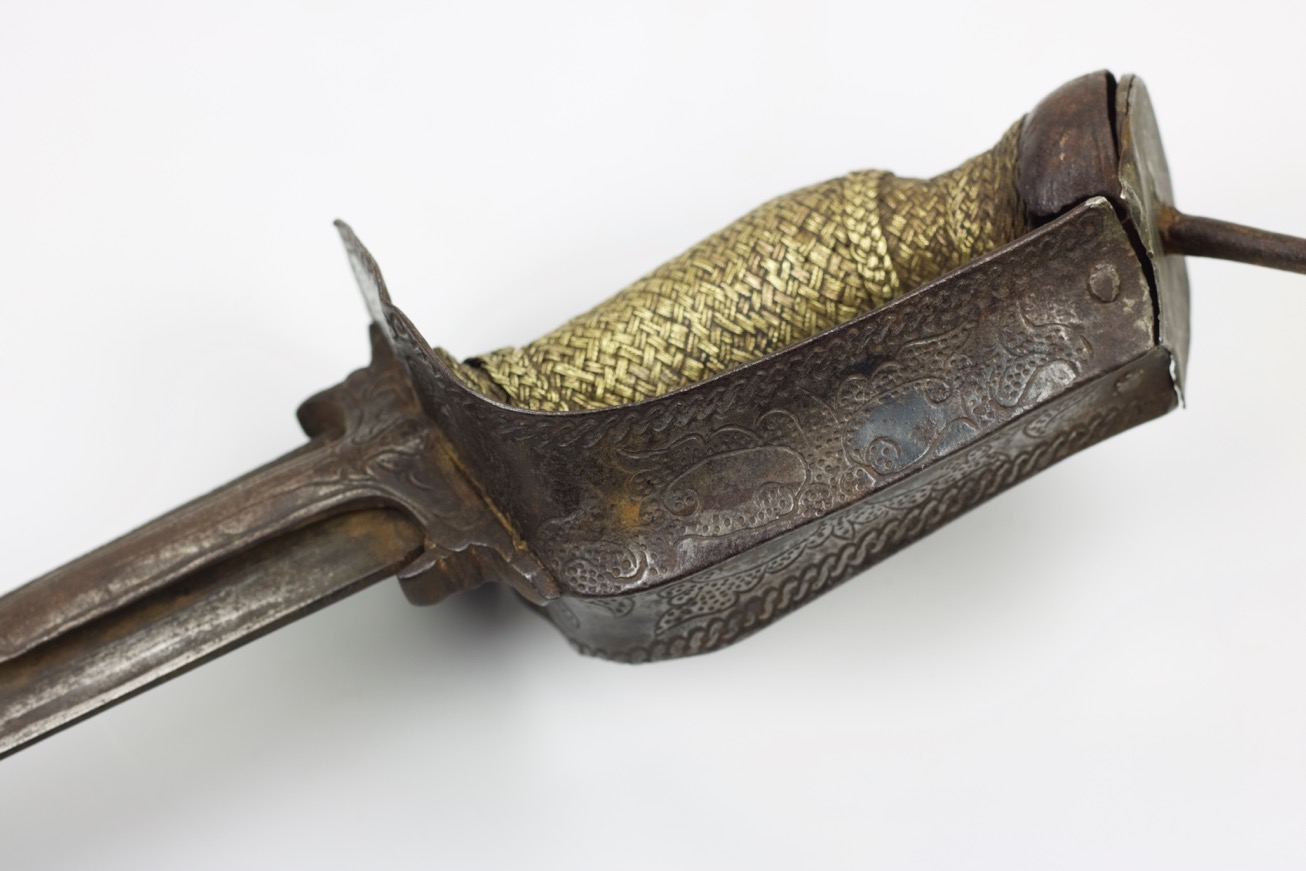
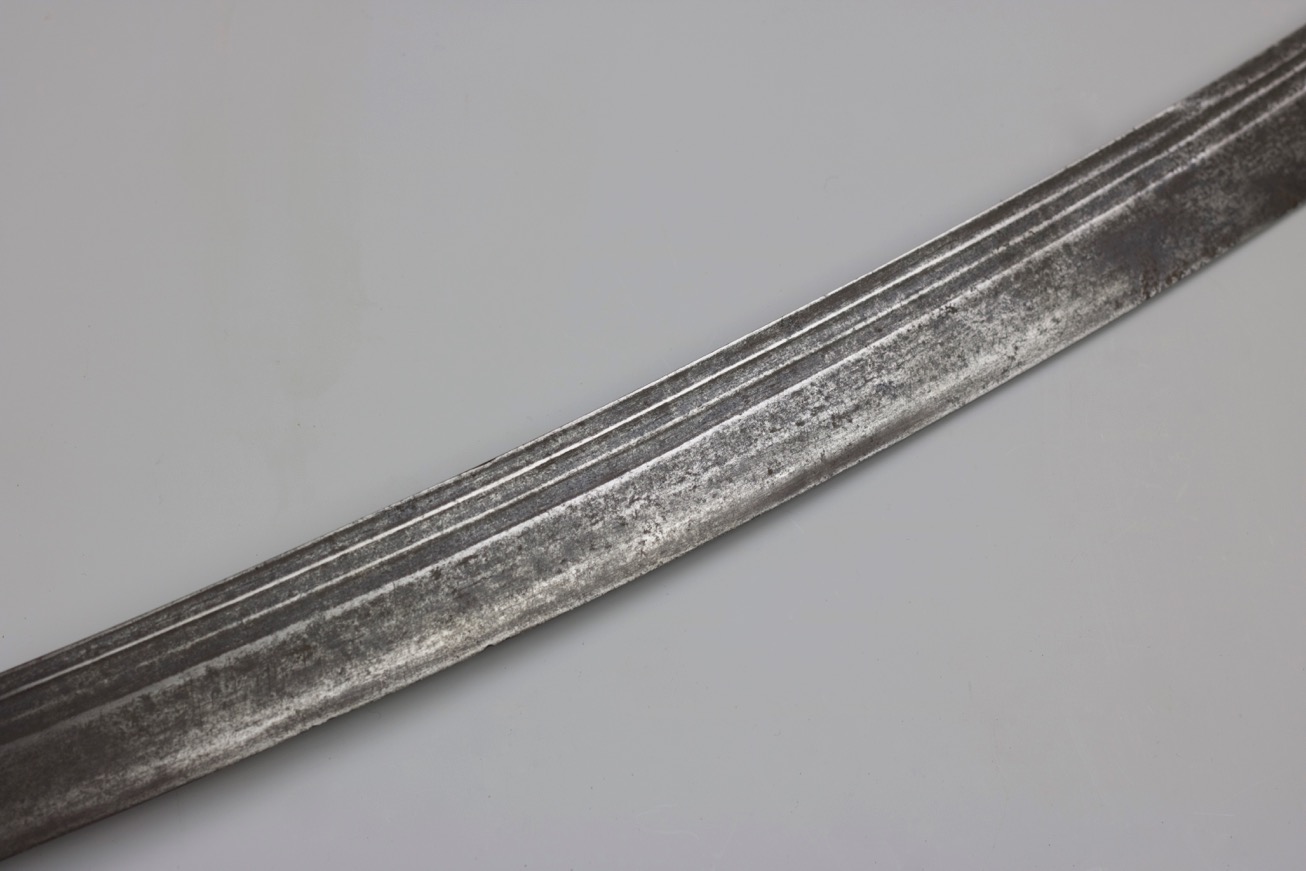
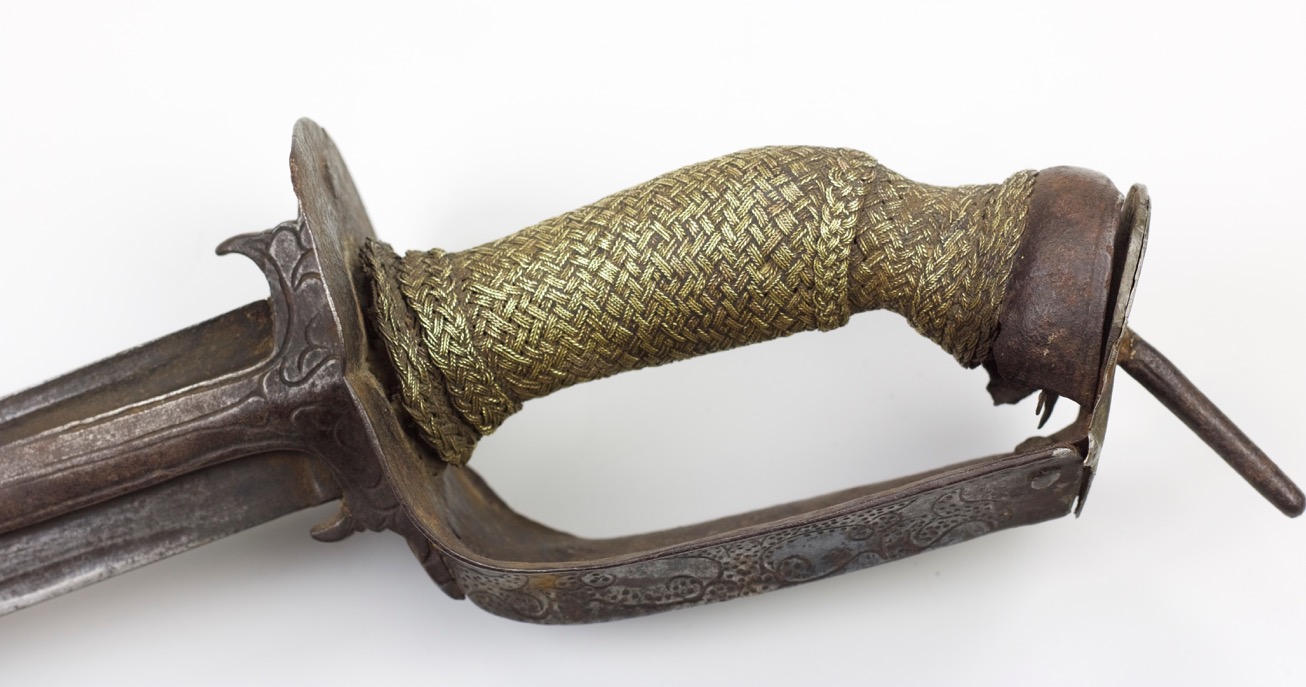
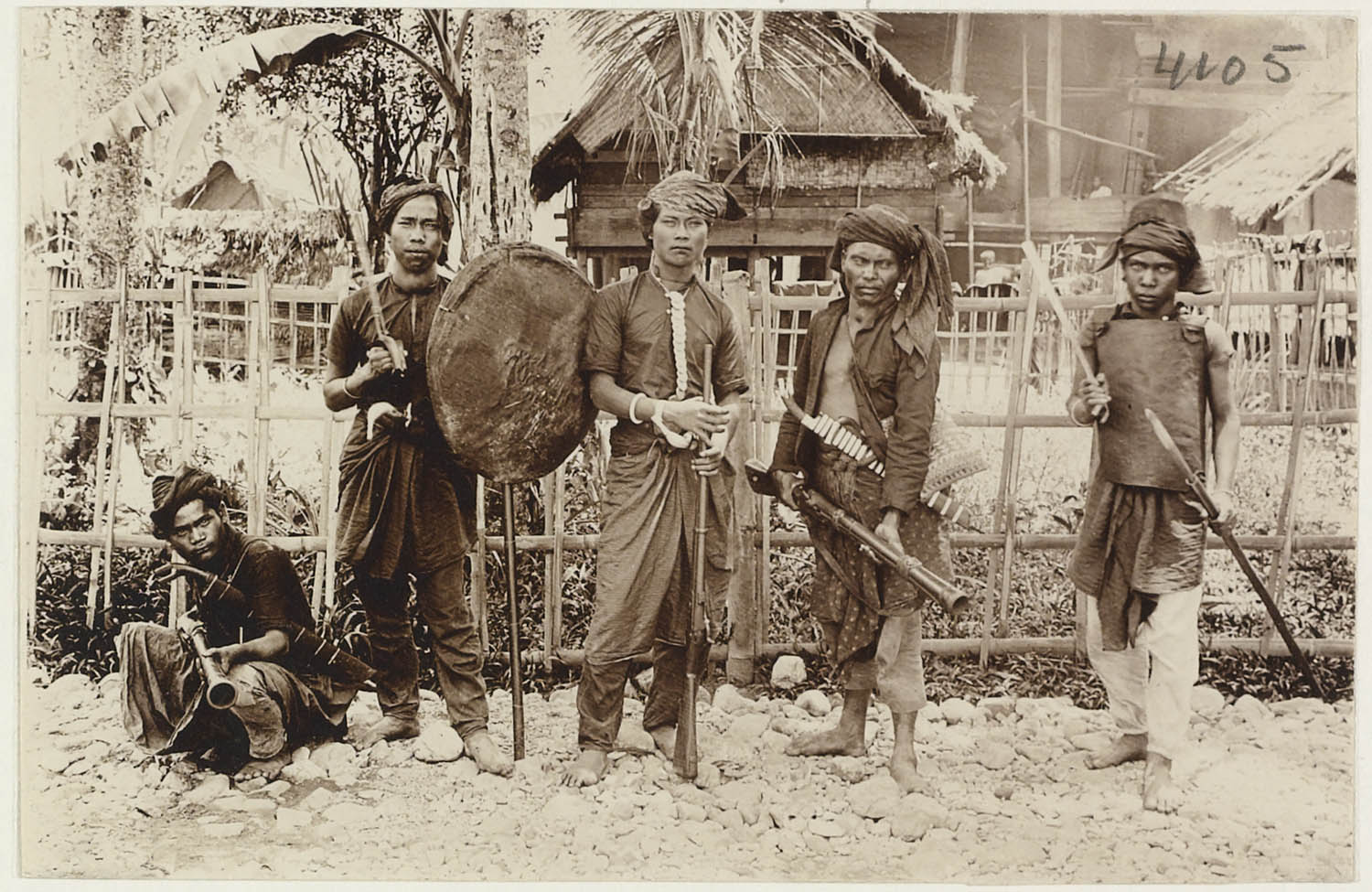
Some Acenese warriors. The second from the left carries a peudeueng peusangan.
Photo by Henricus Marinus Neeb, around 1900.
From Photography Indonesia blog
With a very fine Nepalese blade, but kard-like hilt and scabbard.
Early type with very shallow notch in the blade and little flare in the pommel.

